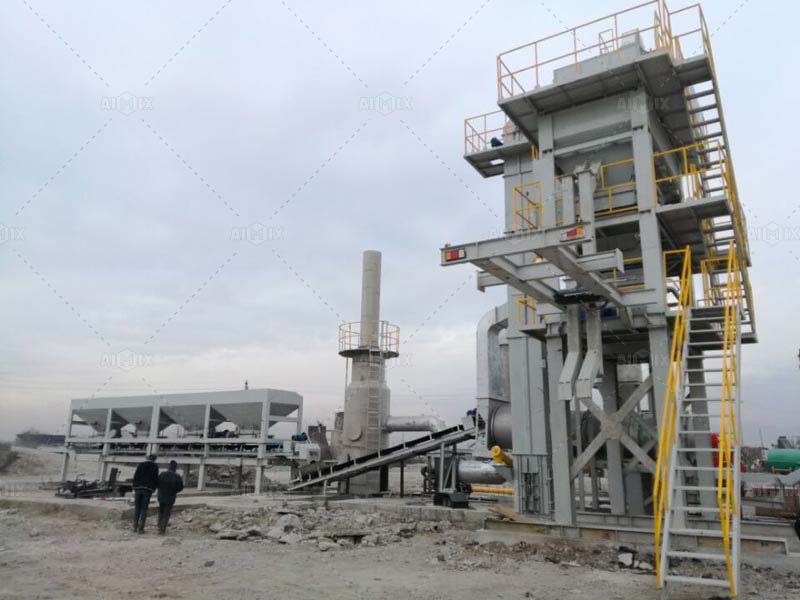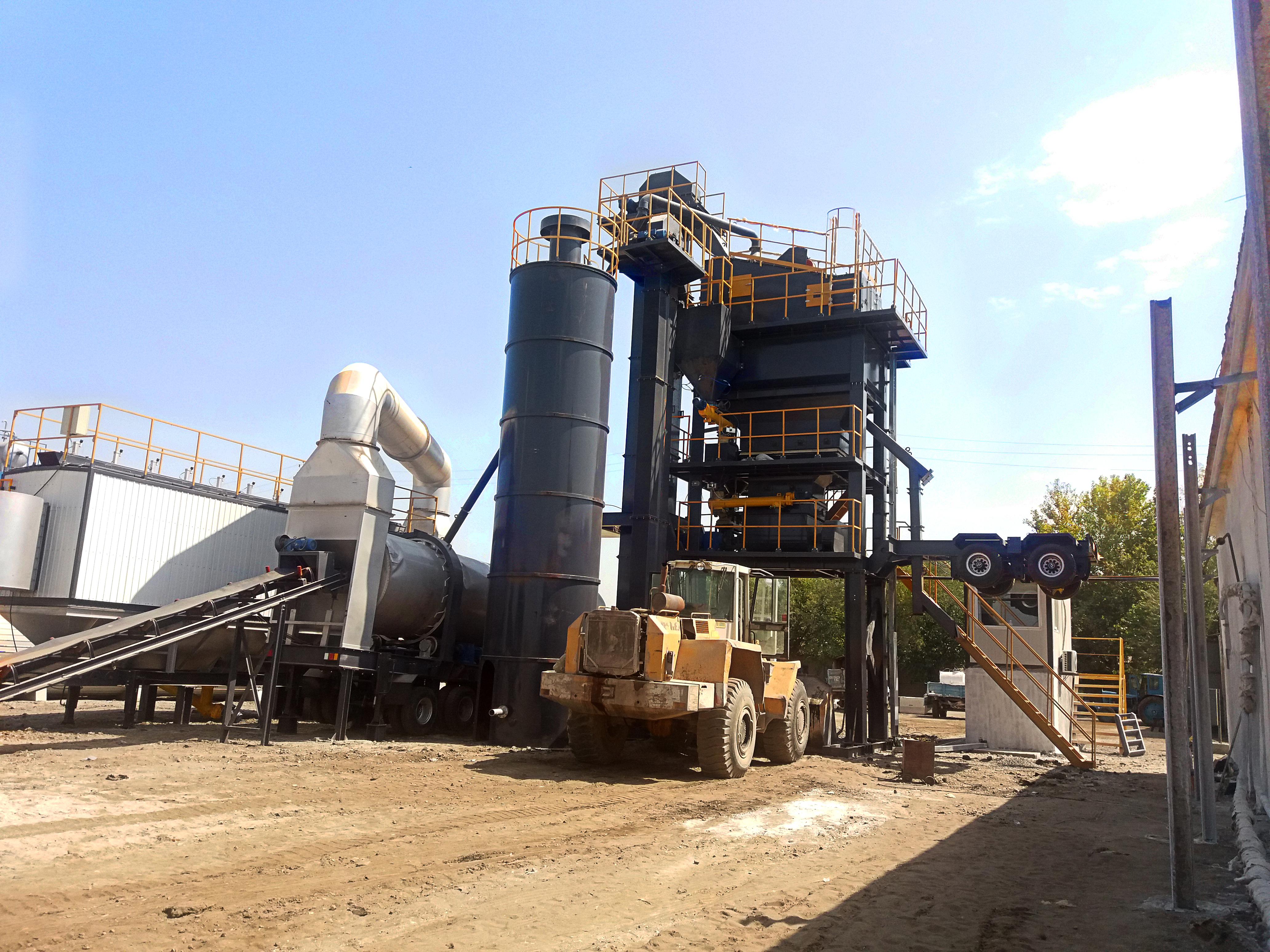Can a Mobile Asphalt Plant Mix While Moving?
A mobile asphalt plant is a crucial piece of equipment in road construction, offering flexibility and efficiency in producing asphalt mixtures. However, one common question amongst contractors and project managers is whether a mobile asphalt plant can mix asphalt while moving. Understanding how these plants operate and their limitations can help in choosing the right equipment for different projects.
Contents |
[edit] Understanding Mobile Asphalt Plants
[edit] What Is a Mobile Asphalt Plant?
A mobile asphalt plant is a portable version of a traditional asphalt plant, designed to be easily transported to different job sites. It allows asphalt production close to the construction area, reducing transportation costs and ensuring fresh, high-quality asphalt for paving.
[edit] How Does a Mobile Asphalt Plant Work?
Mobile asphalt plants follow the same basic principles as stationary plants:
- Aggregate drying and heating – Raw materials are dried in a drum.
- Mixing with bitumen – Heated aggregates are combined with bitumen and other additives.
- Storage and delivery – The final mix is transferred to storage silos or directly to trucks for paving.
Unlike continuous pavers, which lay asphalt while moving, mobile asphalt plants focus on batch or continuous mixing at a stationary position.
[edit] Can a Mobile Asphalt Plant Mix While Moving?
[edit] Stationary Mixing Process
A mobile asphalt plant is designed to be transported between job sites, but it must be stationary during production. The mixing process requires controlled heating, precise material proportions, and stable operating conditions, which are difficult to maintain while the plan is in motion.
[edit] Key Reasons Why Mixing While Moving Is Not Feasible
- Stability and Safety
- Precise Aggregate and Bitumen Ratio
- A consistent mix requires precise material proportions. Continuous movement would disrupt the controlled feeding of aggregates and bitumen, leading to uneven quality.
- Power and Fuel Supply
- Structural Limitations
- The design of mobile plants prioritises portability, but the mixing drum and drying components must remain steady for effective operation.
[edit] How Mobile Asphalt Plants Enhance Efficiency
[edit] Rapid Deployment and Setup
One of the biggest advantages of a mobile asphalt plant is its ability to be quickly relocated and set up near a construction site. This reduces downtime and ensures a continuous supply of fresh asphalt.
[edit] Reduced Transportation Costs
By producing asphalt directly at the site, mobile plants eliminate the need for long-distance asphalt transportation, cutting fuel and labour costs.
[edit] Adaptability for Different Projects
Whether for highway paving, rural road construction, or temporary projects, mobile plants offer flexibility in asphalt production without being tied to a single location.
[edit] Choosing the Right Asphalt Plant for Your Project
[edit] When to Use a Mobile Asphalt Plant
- Short-term projects requiring frequent relocation.
- Remote areas where transporting asphalt from a central plant is costly.
- Temporary road repairs where quick asphalt production is needed.
[edit] When to Consider a Stationary Asphalt Plant
- High-volume projects that require continuous production.
- Large-scale infrastructure projects with long construction timelines.
- Urban areas where a fixed asphalt plant can serve multiple sites efficiently.
[edit] Conclusion
While a mobile asphalt plant offers excellent flexibility for road construction projects, it cannot mix asphalt while moving. The mixing process requires stability, controlled material proportions, and precise heating, all of which are disrupted by movement. However, mobile plants still provide significant advantages by allowing on-site production, reducing transportation costs, and increasing efficiency in temporary and remote construction projects. Choosing the right asphalt plant depends on project size, location, and production needs.
Featured articles and news
RTPI leader to become new CIOB Chief Executive Officer
Dr Victoria Hills MRTPI, FICE to take over after Caroline Gumble’s departure.
Social and affordable housing, a long term plan for delivery
The “Delivering a Decade of Renewal for Social and Affordable Housing” strategy sets out future path.
A change to adoptive architecture
Effects of global weather warming on architectural detailing, material choice and human interaction.
The proposed publicly owned and backed subsidiary of Homes England, to facilitate new homes.
How big is the problem and what can we do to mitigate the effects?
Overheating guidance and tools for building designers
A number of cool guides to help with the heat.
The UK's Modern Industrial Strategy: A 10 year plan
Previous consultation criticism, current key elements and general support with some persisting reservations.
Building Safety Regulator reforms
New roles, new staff and a new fast track service pave the way for a single construction regulator.
Architectural Technologist CPDs and Communications
CIAT CPD… and how you can do it!
Cooling centres and cool spaces
Managing extreme heat in cities by directing the public to places for heat stress relief and water sources.
Winter gardens: A brief history and warm variations
Extending the season with glass in different forms and terms.
Restoring Great Yarmouth's Winter Gardens
Transforming one of the least sustainable constructions imaginable.
Construction Skills Mission Board launch sector drive
Newly formed government and industry collaboration set strategy for recruiting an additional 100,000 construction workers a year.
New Architects Code comes into effect in September 2025
ARB Architects Code of Conduct and Practice available with ongoing consultation regarding guidance.
Welsh Skills Body (Medr) launches ambitious plan
The new skills body brings together funding and regulation of tertiary education and research for the devolved nation.
Paul Gandy FCIOB announced as next CIOB President
Former Tilbury Douglas CEO takes helm.
UK Infrastructure: A 10 Year Strategy. In brief with reactions
With the National Infrastructure and Service Transformation Authority (NISTA).
























